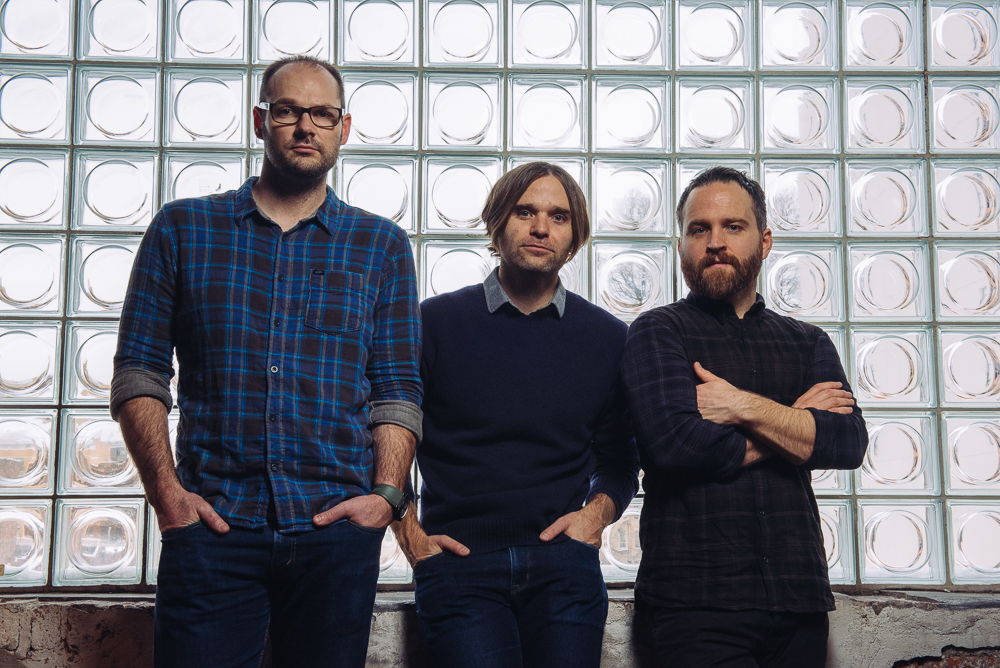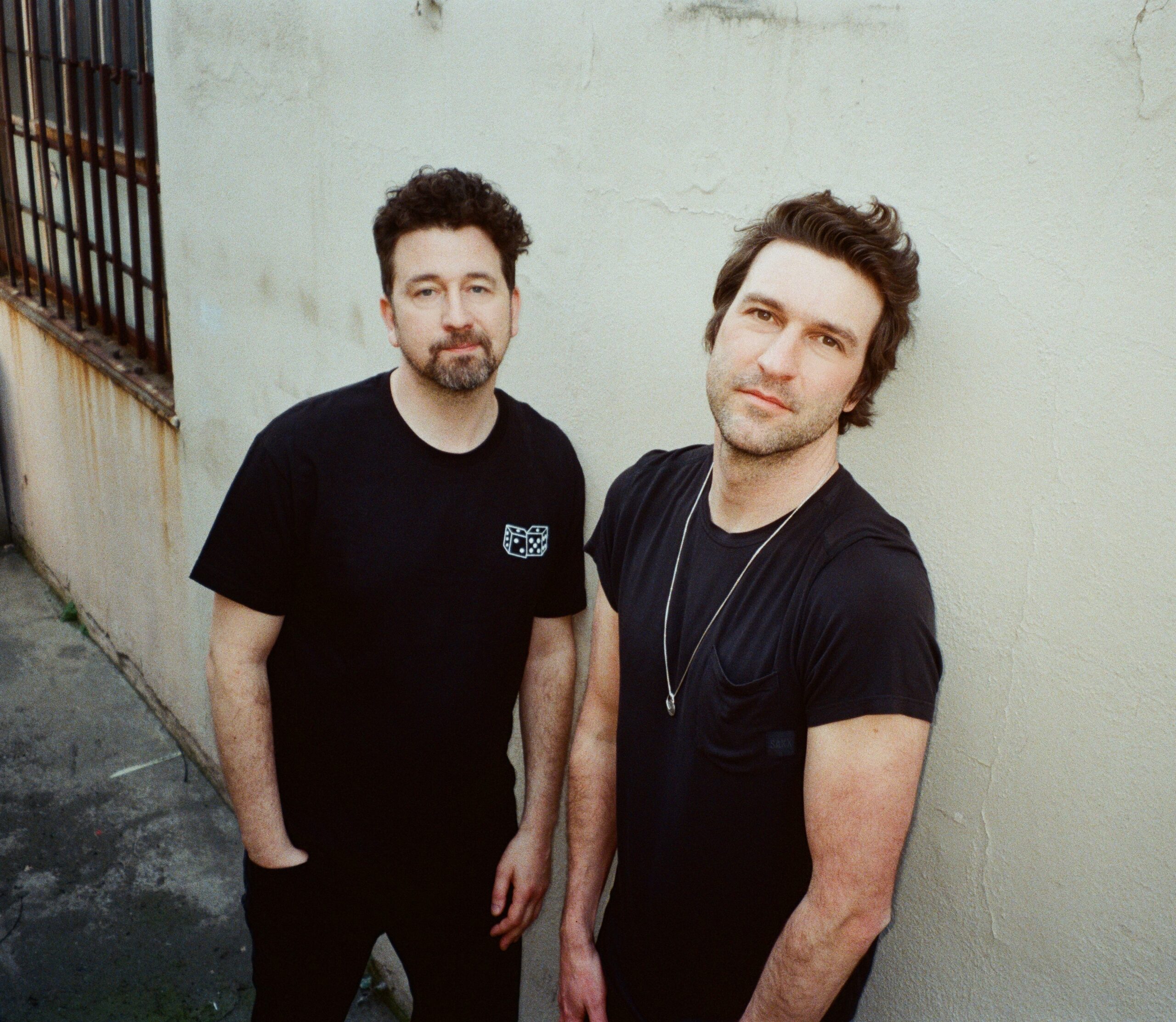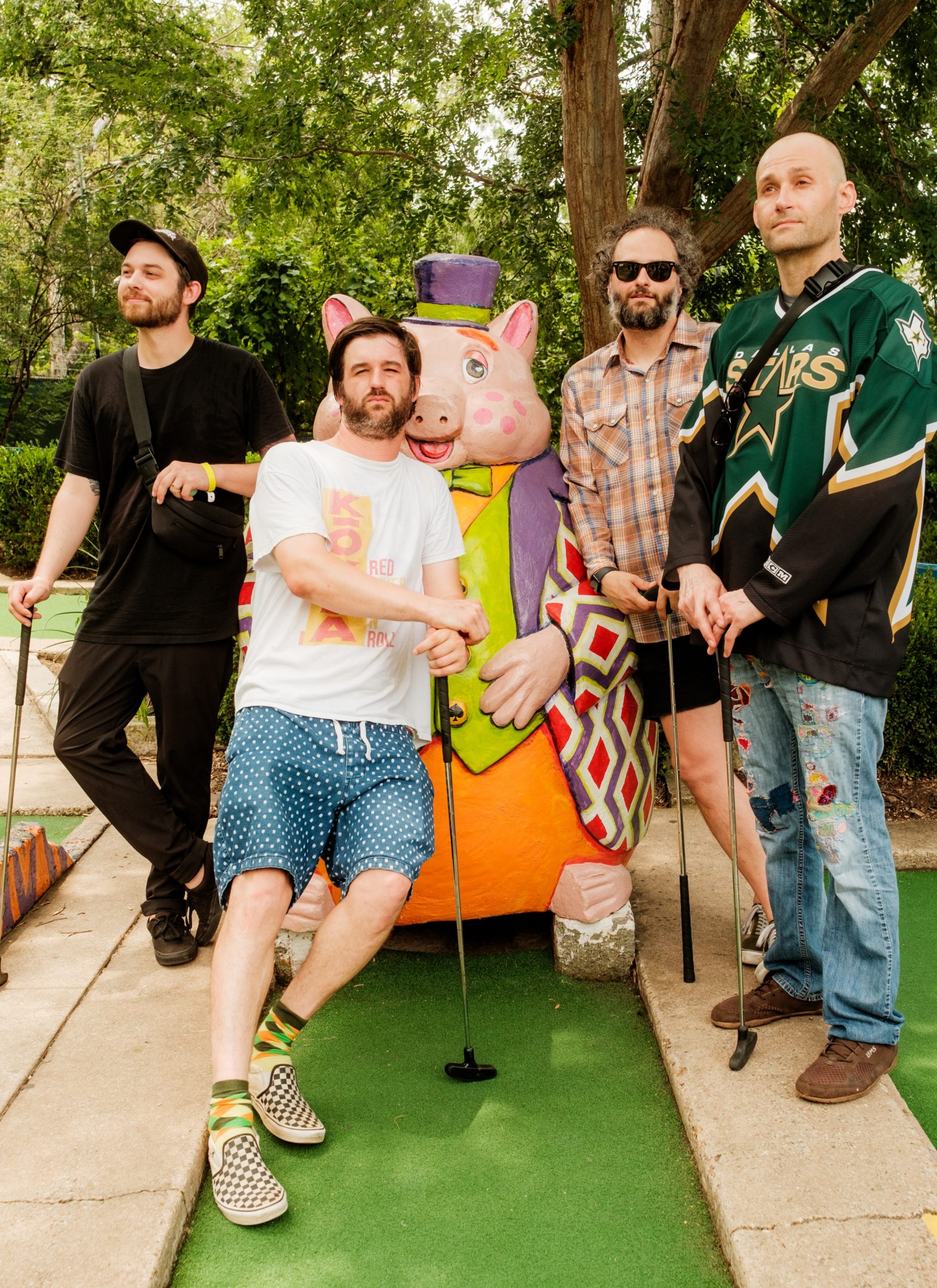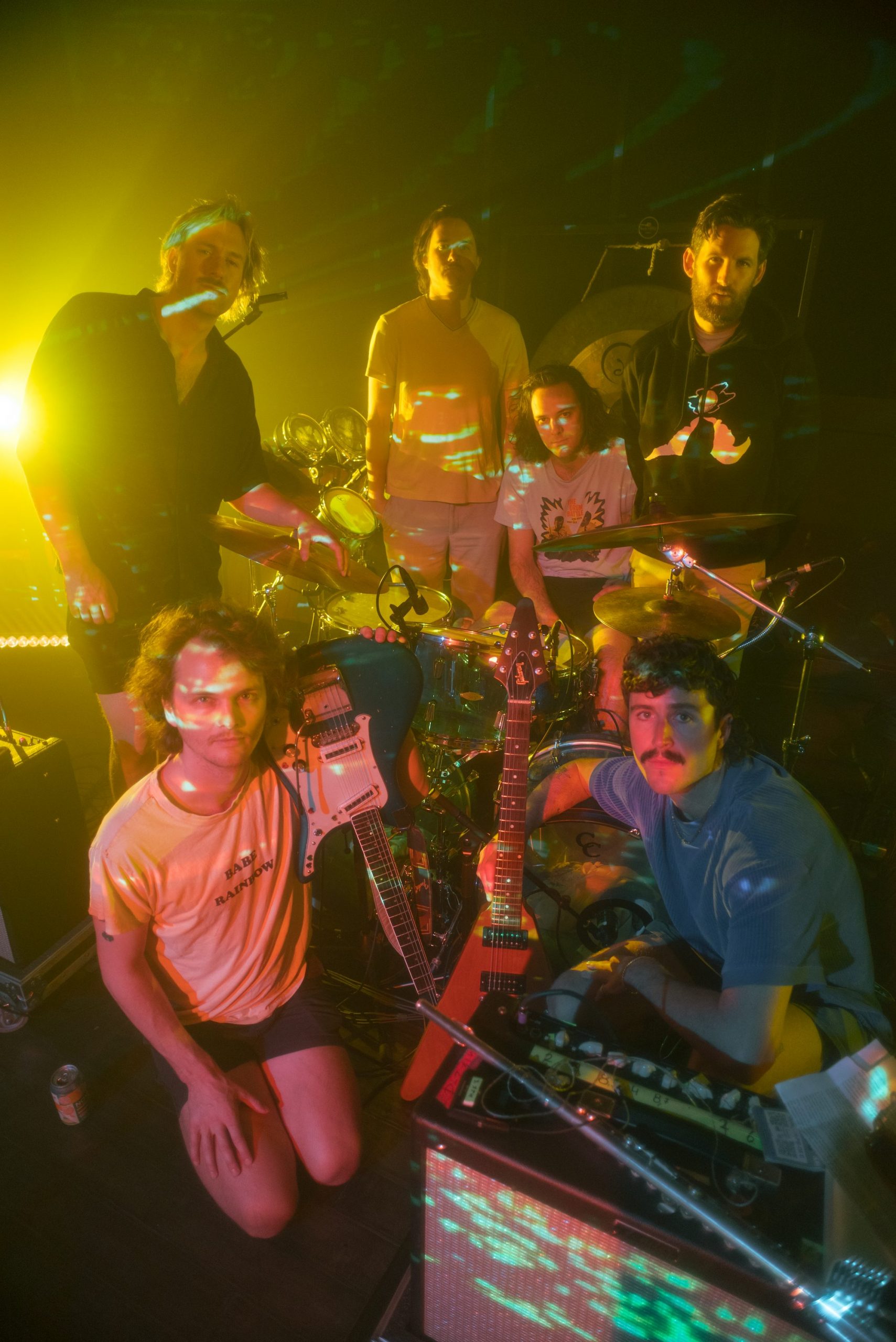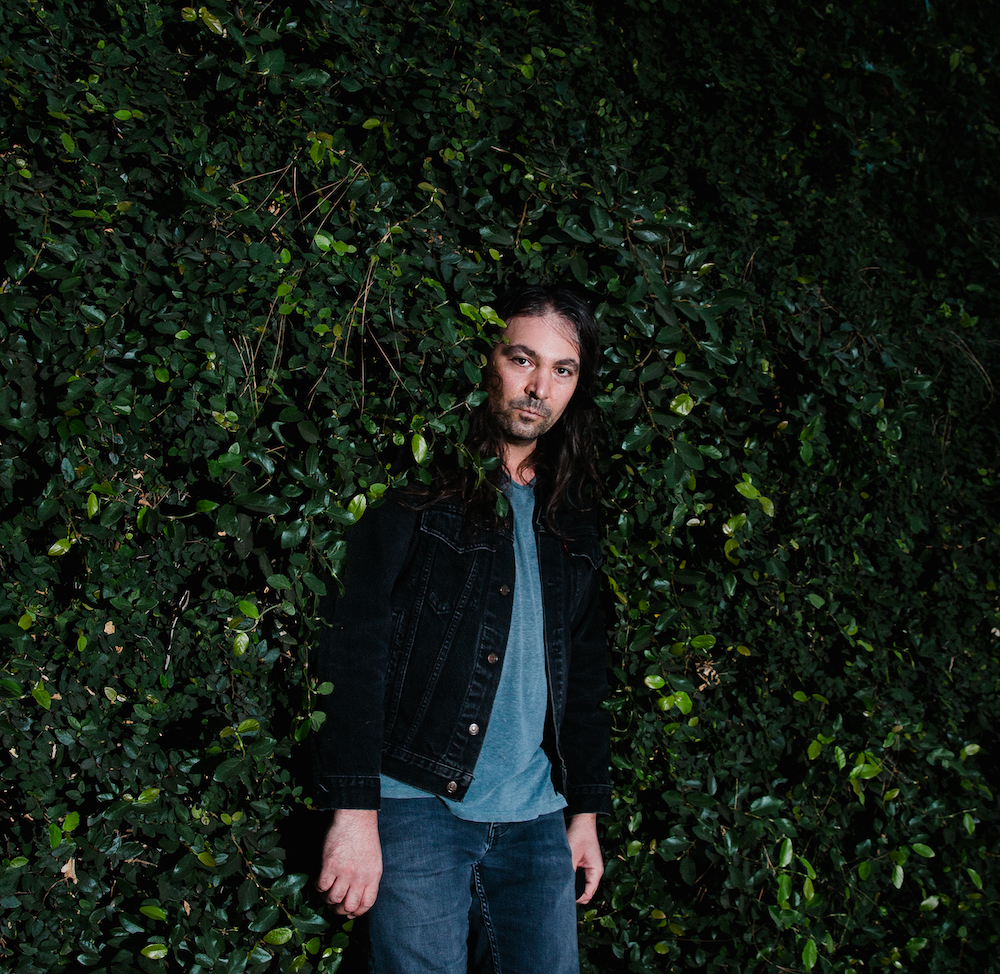Music Hall Of Williamsburg is too small for Death Cab For Cutie. The room has a capacity of 550 people, but feels even smaller today, when it's entirely empty and the band is fine-tuning the little details of the handful of new songs they plan to preview at tomorrow night's surprise show. Despite having only about a dozen people milling around, it feels miniscule because (if you've never seen Death Cab live before), this band is far louder and harder-edged than you might expect onstage. The intimate grief of frontman Ben Gibbard's lyrics gets super-sized and super-charged, krautrock-y jams somehow roaring along their grooves. They might be working on subtleties -- everyone comments on a moment where Gibbard applies some chorus to a particular guitar line, and how much the effect should be turned up; at one point Gibbard turns to touring guitarist Dave Depper and says, "Sounded nice on the harmonies, you're pulling me uphill though" -- but the overwhelming sense sitting up here in Music Hall's balcony is the sheer amount of muscle Death Cab bring live. And every now and then I have to remind myself: We're talking about one of the biggest indie rock acts of the '00s, the sort that is used to larger rooms no matter how confessional their music might be. The next time they'll be in New York, after all, they'll be playing Madison Square Garden.
[videoembed size="full_width" alignment="center"]https://youtube.com/watch?v=w_ccoMjPNG4[/videoembed]
The occasion of Death Cab's NYC visit is an early round of press for their forthcoming eighth album, Kintsugi. The album occupies a strange, dual position in the arc of the band's existence. There are some people who will look at this as the hopeful comeback album, after 2011's Codes And Keys, an album some people loved but also one of the more divisive entries in Death Cab's catalog, being a sonic and lyrical outlier amongst the band's work. But for all the elements of rebirth and steadfast movement forward that the band members will attribute to Kintsugi, there's also an inevitably elegiac quality to it as well: This is the last Death Cab album to feature longtime guitarist/producer Chris Walla, who announced he was leaving Death Cab to focus on production work and stop touring. There's no way this isn't some kind of significant turning point for the band. "The lion's share of Chris' contributions up until this point had been in the producer's role," bassist Nick Harmer explains. Gibbard might be the primary songwriter in Death Cab For Cutie, but Walla also seemed like something of a captain and architect, the one who liked being in the studio for fifteen hours by himself, sculpting the sound of a particular Death Cab record. With Walla ceding producer duties to Rich Costey and finishing the album simply as a musician in the band, the recording of Kintsugi was a lot of things at once -- a final run together, but also an exploratory process necessary to figuring out how this band can continue on after the departure of such a key member.
The original plan today was to go to the band's taping for the Late Show With David Letterman, but last night New York got hit with what was supposed to be a big old apocalyptic snowstorm. Today, in the afternoon hours after the not-quite-blizzard, we've instead taken a walk through Williamsburg post-rehearsal, over to Rough Trade to shop for some records. The remaining three members of Death Cab all have their particular curiosities going on. Gibbard, his chin-length hair hidden under a knit hat, peruses some Neil Young and Robyn Hitchcock, but is really looking to dig deeper into krautrock. Harmer's got a handful of dub records in his arm, while drummer Jason McGerr has moved on from failed attempts to find James Blake's Overgrown and a few jazz records to focus on electronic music, particularly Flying Lotus' You're Dead! and Jon Hopkins.
The funny thing about watching the guys shop for records is that the way they're talking about their music consumption right now falls along the same lines as what they'll later say about Kintsugi. If it stops short of mortality, ideas of aging come up. Gibbard lingers over the Bedhead reissues, recalling how much he and Harmer and Walla bonded over them in the band's early days. "I'm at the age where a lot of my formative years as a music listener are being sold back to me at three times the price," Gibbard reflects. "But I can't help myself. I feel like if it was that important to me I need to own it." The rest of it is exploration, adaptation, chasing new threads because you might have to in order to survive.
"I always say keep your friends close and your enemies closer," McGerr says of the electronic albums splayed out in front of him, in his measured, vaguely wry way of speaking. "I feel like we've only scratched the surface of the possibilities of electronic music. It has me a little worried [as a drummer]. [laughs]." McGerr and Harmer are both 40, both married; Gibbard's 38, divorced. They're right in that part of their lives and careers where it'd be easy for all this stuff -- being as obsessive a music fan as you were when you were fourteen, being in a touring band for a living -- could get rote and monotonous, and then move more into the territory of "Why am I doing this?" Walla leaving could've had so many different effects on the band: They could've dissolved, they could've tried to keep things as much the same as possible. Coming out on the other side of it, though, they seem to have embraced everything that has occurred with Death Cab in the past few years as a much-needed reset button.
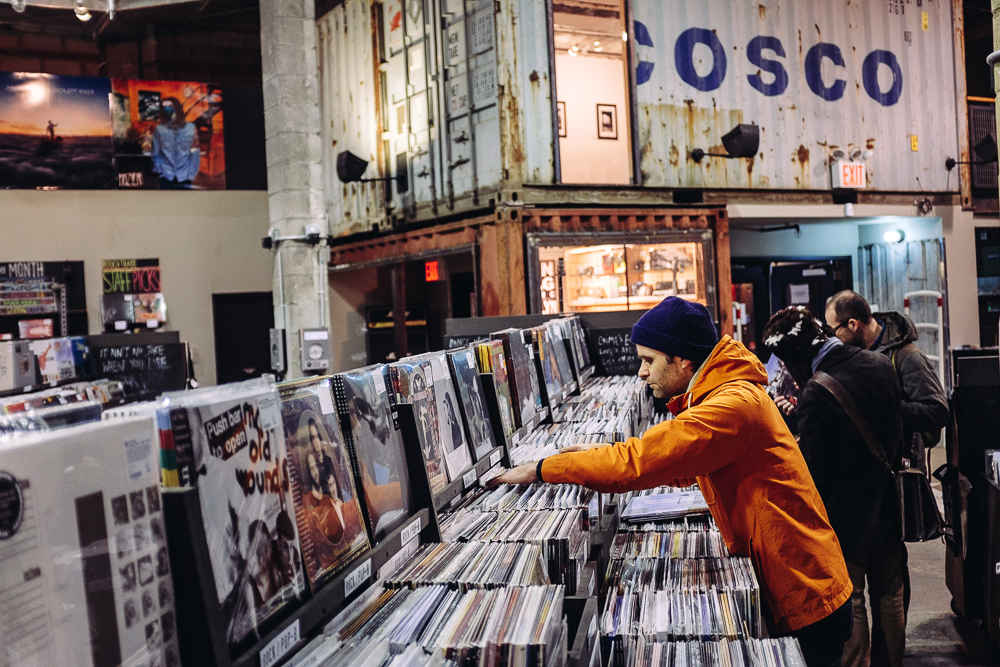
The departure of Walla was something of a dramatic upset for longtime Death Cab fans. In hindsight, though, there were signals to the band that Walla saw his role dramatically changing in the near future. After completing 2011's Codes And Keys, he had already thrown out the idea that maybe they should look at an outside producer for the follow-up; and in 2013, a few weeks into the early stages of what would eventually become Kintsugi, he decided he wasn't the man for the job. Later, around the halfway point of tracking, he told the other members it'd be his last record with the band. "We were like, 'Listen, if this is going to be your last album, then let's just make it a celebration of all the work we've done together and do our best to leave this and stay positive going through it,'" Harmer recalls. "Because there is no animosity, there is no bad blood -- he's a friend of ours just like any one of your friends. You want them to do what they want to be doing."
"I think early on we were trying to negotiate a number of different possibilities of how it could work," Gibbard says, commenting on the idea of having Walla continue on as a recording member of Death Cab without touring, or other permutations of keeping him involved. "I don't think it would be good for morale to have someone come in after being gone for two years or whatever, play some guitar, and then leave again." Harmer adds: "It's not what he wanted either." For Gibbard, and seemingly Harmer and McGerr as well, the making of Kintsugi was proof they could continue on as a creative unit even after Walla's amicable departure. Still, there are questions as to what Death Cab will look like in the future. "I think that time will tell what this band will be creatively next time we make a record," Gibbard says. "Whether it's the three of us in the studio or some kind of combination of [Depper and touring keyboardist Zac Rae]. That is too far down the road to see right now."
Historically, the way the band works is that, in between albums, Gibbard writes and demos and brings the other band members a batch of songs in various states -- some might be him and an acoustic guitar, some might already have sketches in place for all the instrumentation. The other band members sift through them, picking out the ones in which they see the most potential and collecting them together so that, hopefully, particular themes in Gibbard's writing can come together as a cohesive whole. The work of the band at that point is to flesh it all out, add their respective touches to the songs. By Harmer's estimation, one of Costey's major contributions to the process of Kintsugi was recognizing this tendency and pushing them even further with it: Costey's studio was rearranged to have the main tracking room, the main control room, and then three side rooms gutted and filled with little studios, where each member could retreat and explore new ideas, keeping active while, say, Gibbard would be doing a vocal overdub in the main room. Over the course of, more or less, four months, this was how the band operated, everyone in the trenches, constantly pulling apart and putting back together the songs in a more all-hands-on-deck kind of way than in the recent past.
While it might seem like a relatively small thing to an outsider, the idea of bringing in a producer who wasn't Walla was a major shift. "I think we felt [that we were too set in our ways] in the past," McGerr explains. "We really held onto doing things they way we always had when we signed to Atlantic for Plans. We didn't want to change." For McGerr, working with Costey was a new challenge he welcomed in the end, jokingly comparing Costey pushing him to perfect his drum parts to J.K. Simmons' character in Whiplash. "I feel like, in a lot of ways, this is the first time I made a record," he says. "Because the hot seat was really fucking hot at times." But where Costey pushed them in places where their familiarity with Walla might've let them off the hook in the past, the remaining trio is quick to credit Costey in other ways, as well. Each credits Costey with a desire to understand Death Cab's existing behavior, and push it to make Kintsugi as strong as possible; he didn't impose his own vision or work patterns on them.
Each also gives credit to the work Walla had put into Death Cab -- "Chris' contributions to the band have been paramount and wonderful and he has been behind the desk for records that will assuredly go down as some of the best, or the best, we've ever made," Gibbard says -- while also stressing how important it was to learn they could function without him. "It was essential we could work with an outside producer and still make an album that, I feel, fits very much into the evolution of our band and still sounds like us," Harmer says. "It was a boost of confidence. I would never say that Chris is replaceable in any sense, but we can still sound like our band and do this stuff. I think there's some evidence in there for us, too, moving forward." To hear both Harmer and McGerr describe it, it was some combination of shoring up faith in their future capabilities, while also a much-needed and much-awaited rejuvenation. "We definitely didn't want to compromise this time around. We took a leap of faith and it wound up being a really, really, really high jump," McGerr says. "It's definitely the way we need to move forward."
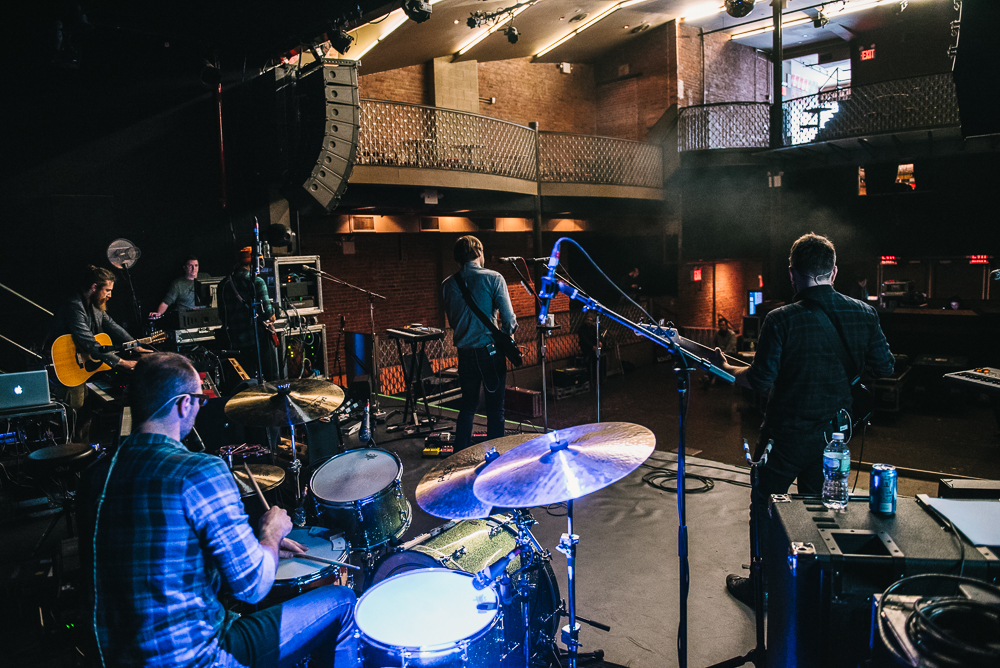
Later in the afternoon, we've returned to Music Hall Of Williamsburg and seated ourselves in the balcony, the table in front of us populated with coffees and hot chocolates, which are entirely unnecessary because Music Hall feels like it's about a hundred degrees inside currently. After record-diving and picking apart the process leading to Kintsugi, the band's ready to talk about the album itself. I think back to Harmer's assertion that Kintsugi should be a celebration of everything the band had done with Walla, and I think about how important it was to them to reevaluate things after the fragmented process of recording Codes And Keys. (Gibbard was living in Los Angeles, so there was a lot of flying back and forth and under-the-gun tracking, leaving Walla to assemble the pieces alone much of the time.) The resulting album is full of classic Death Cab structures and melodies, but with new little elements that still sets it apart. Synths and a rhythmic focus play a large role, but feel incorporated seamlessly into the band's pre-existing aesthetic, particularly in the gleaming dreaminess of standouts like "Black Sun," "The Ghosts Of Beverly Drive," and "El Dorado." "We've always dabbled in [synths] as textural items," Harmer says. "Now I feel like it's starting to take more shape and be structural support."
[videoembed size="full_width" alignment="center"]https://youtube.com/watch?v=eTbVIfqeDq0[/videoembed]
It was Harmer who came up with the title Kintsugi. The band never applies a title to a record until it's finished, at which point they all submit ideas and deliberate on which one they collectively like the most. Harmer was struck by the technique of Kintsugi when he stumbled across it on an art blog. "It's basically mixing gold in with resin to repair broken ceramics," he explains. "It speaks to, on a philosophical level, making the repair of an object part of its history, and not going out of your way to attempt to cover that up or make it invisible." While it'd be tempting to point towards literal events in the lives of the band members -- from Walla's departure to this being the first Death Cab album since Gibbard's divorce from Zooey Deschanel -- Harmer stresses that it was more of an abstract, general feeling of being a certain age. "Those kinds of emotional scars, physical scars, psychological scars, the life that happens to people moving forward," Harmer begins, "It's one of those things that, the older I get, I recognize the value in having a collection of those." Thinking back to the casual comments at Rough Trade -- to Gibbard's offhand assertions about aging out enough to see bands come back around for the first time, to McGerr's fascination with a genre he sardonically admits is a threat to him as a drummer -- and then combining that with Walla's departure, a high-profile divorce, a fanbase's frustration with an album that was one of the biggest stylistic gambles of their career ... it makes sense why the three of them all agreed Kintsugi was a perfect title for the record. This is some kind of little sea change in their career, and for a band that has existed as long as Death Cab now has, it's inevitable that you carry on with all those scars and experiences stitched into who you are. It's what you have to work with you continue on.
Of course, working with the scars has been a fundamental element of Death Cab's career: Part of the reason their fans identify so intensely with specific albums is that Gibbard's lyrics have always been confessional, soul-baring, in the kind of way that whichever Death Cab album strikes you as their unimpeachable best probably has as much to do with whichever one was around when you were going through some shit as it does with the music. Codes And Keys had marked a shift, with Gibbard trying out a more minimal style of lyrics that didn't rely on self-expression. "I didn't feel like sharing with people during the preceding one, I just wanted to keep it a little more universal," Gibbard says. "And I think I've learned that's not what people like or want from me," he continues with a dry laugh. Though Gibbard doesn't directly reference his divorce very much in conversation, there's some admission that, of course, he went through this painful period after they completed Codes And Keys, and songwriting was always his way of processing his life. The reason Death Cab fans can latch onto specific albums as documents of some tough period in their lives is because they all, essentially if not entirely, remain documents of whatever Gibbard was going through in specific periods of his own life. There isn't one literal event or topic that defines Kintsugi, but that's sort of the point: It's an acknowledgment of what this band is all about and what they've carried with them, and it's named for a technique that is all about taking those things and willfully creating something new out of them.
What exactly that new thing is still remains to be seen. The show at Music Hall is only their second with Rae and Depper; who knows whether they'll join the band full time, or whether they'll even want to. Who knows what it'll be like the first time Death Cab enters the studio the three of them, the first time totally without Walla, to work on a record. "We are a band that is almost too aware of our own history," Gibbard says at one point. But the whole process of Kintsugi came out of that, and was a way of showing these guys they could continue on with that, and not in spite of it or in opposition to it. The word "reinvigoration" is thrown around a lot, the tone is excitement and hopefulness and eagerness to carry on playing shows and writing songs. "It's certainly not going to be the same," Gibbard says of Death Cab after Walla. Eight albums in, "the same" is exactly where most bands have settled. What could've been a fracturing couple of years, as it turns out, has led Death Cab to an enviable position for a group approaching veteran status: There is still uncertainty ahead.
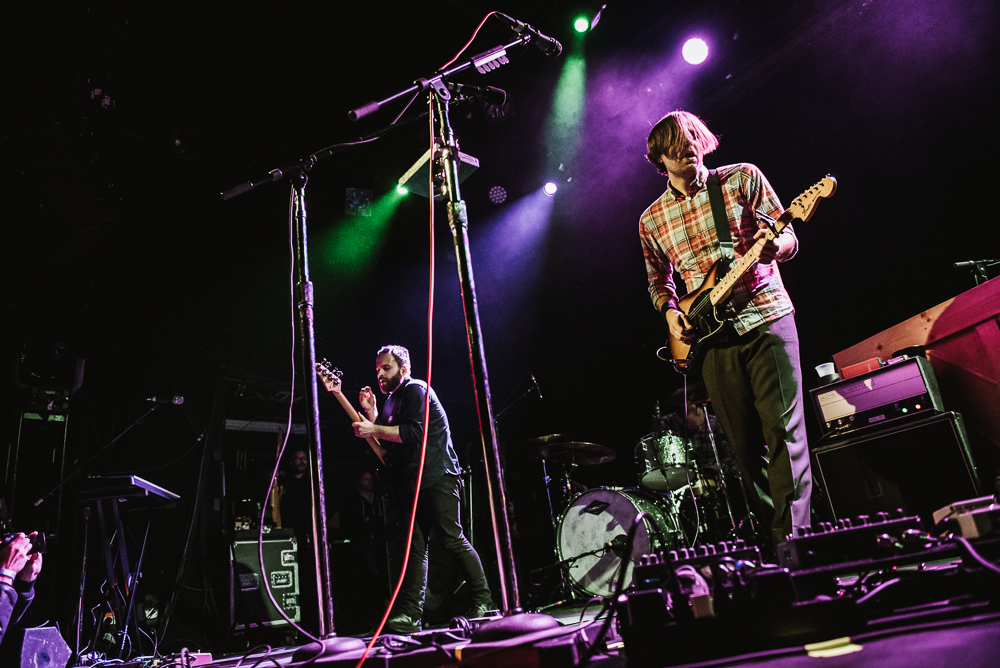
[Photos by Ryan Muir/Stereogum.]
